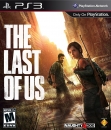Norwegian Refugee Council says none of its trucks passed through Karem Abu Salem crossing
The Norwegian Refugee Council (NRC) has said that none of the aid group’s trucks have been permitted to pass through the Karem Abu Salem (Kerem Shalom) post, despite Israel’s claims that the border crossing into Gaza had been reopened on Wednesday.
“We have no trucks going over. I have heard of no humanitarian trucks over Kerem Shalom,” NRC chief Jan Egeland said in an interview. He added that the NRC has run out of fuel in Gaza, and it does not have the cash to rent a car or truck in order to deliver humanitarian aid.
Children in Rafah at ‘edge of survival’ as Israeli military keeps border crossing closed
Israel’s continued closure of the Rafah border crossing is “choking off the entry of life-saving aid into Gaza”, the UN Office for the Coordination of Humanitarian Affairs (OCHA) said in its latest rapid assessment report.
Up until Israeli tanks took over the Palestinian border crossing on Tuesday, there was a daily average of 48 relief trucks and 166,000 litres of diesel entering Gaza, the UN report notes.
“The continued block on the entry of critical humanitarian items via [the] Rafah Crossing and continued hostilities would have serious consequences on access to food and nutrition services,” the UN report states.
The report also includes an earlier warning from the UN’s children agency, UNICEF, which notes that many of the more than 600,000 children “crammed” into Rafah are already “highly vulnerable and at the edge of survival”, and warns that an Israeli “ground incursion would expose them to catastrophic risks”.

A Palestinian child injured following an Israeli strike is treated by medics at the Kuwaiti Hospital in Rafah, southern Gaza Strip, on Wednesday
‘I can’t move from one place to another’
Desperate Palestinian families have been fleeing Rafah in fear of Israeli bombardment, but not everyone is able to leave. “They are bombarding us, threatening us and telling us to leave – but we have nowhere else to go,” Mohammed Oweida, a displaced Palestinian, has told Al Jazeera.
“Personally, I have no one to turn to. My mother is dead and I have no one else. We are just getting by here, and I simply don’t have the ability to pay money and move from one place to another,” he explained.
Oweida had fled to Rafah from Beit Hanoon, in the north of Gaza, about a month and a half into Israel’s war. He said if it wasn’t for his children, he would have simply stayed in the north and died.
“I have my son and two daughters and another son who was killed. He was three months old. He was killed as a result of the smoke caused by the bombardment,” he added, as he took out a piece of paper.
“This is his ID. Look: Khitab, Joury, Mohammed and Zain,” Oweida said, choking back tears. “Zain is gone.”

UNRWA says 80,000 people fled Rafah since Israeli assault
The UN agency for Palestinian refugees (UNRWA) has said some 80,000 people have fled Rafah since Israeli tanks and troops pushed into eastern areas of the city on Monday.
Calling for an immediate ceasefire as the latest “forced displacement in the Gaza Strip” unfolds, UNRWA said the toll on the tens of thousands of Palestinians forced to flee multiple times in search of refuge was “unbearable”.
“Nowhere is safe,” the agency added.
An estimated 1.5 million people had packed into Rafah in search of refuge over the last several months of Israel’s war on the territory. The UN and humanitarian aid groups are warning of a “catastrophe” should Israel launch a full ground invasion of the city.
Evacuees forced to take different routes amid bombardment
Air strikes have continued to pound the Gaza Strip, mainly concentrated in the central area, the eastern part, as well as where the majority of the attacks have been taking place: in the eastern part of Rafah city.
As of the early hours of yesterday evening, they expanded to the central and western part of Rafah city forcing more people – an estimate of close to 400,000 – to head to the evacuation zone.
Now they are forced to take different routes out of the area all the away to central Gaza.
The vast majority of the people are taking either the coastal road where Israeli gunboats keep firing at them, or Salah al-Din Street – that is a very dangerous area right now given that the entire eastern part of Rafah, Khan Younis and the central area have been targeted repeatedly.
Clean drinking water becoming more difficult to find in Gaza
In just one indication of how desperate the situation is, a quarrel developed into a fight between people at a desalination plant. We saw little kids fighting to get in a queue and elderly people appealing to make space for them and be allowed first.
It’s part of the evolving challenges and complexities for people who evacuated from Rafah city all the way to the central area to set up their tents. People described to us the horrible situation they’re facing – there are no facilities, no infrastructure, no basic services available in the locations they’re sheltering.
So the fight broke out. It was quite a desperate situation. People screamed and it got a bit violent. We had to retreat from the area for the sake of our safety and equipment. People are frustrated and the fear is that we are going to see such scenes at every water desalination station as there is an extreme shortage of basic supplies – particularly of water right now – which is the most needed for evacuees.

Palestinian children pull water containers in Rafah
‘Slow death’: No treatment, medical evacuations for Gaza residents
Sick and wounded Palestinians are dying by the hour as they remain trapped in Gaza without medical care due to Israel’s closure of border crossings, the Health Ministry in the besieged and bombarded territory has said.
“The wounded and sick suffer a slow death because there is no treatment and supplies and there is no possibility for them to travel,” the ministry said, adding that Gaza’s only dialysis centre has now closed.
“We launch an urgent and humanitarian appeal for pressure and urgent action to save the lives of these sick and wounded people, open the crossings, and allow the necessary medical and relief trucks to enter the hospitals,” it added.




















 Essay Pro
Essay Pro